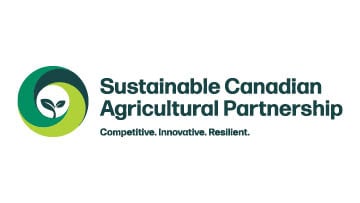Evaluating extended lactations to reduce greenhouse gas emissions and improve farm efficiency
Ongoing

Project Overview
Traditionally, Canadian dairy farmers milk their cows for 10 months, followed by a 2-month dry period. However, recent increases in milk production, improved milk persistence, and challenges with achieving early lactation pregnancy in highly productive cows warrants re-consideration of lactation length. Additionally, extending lactation beyond 10 months could reduce the environmental impact of dairy production in terms of manure output and greenhouse gas emissions as fewer animals (milking cows + replacement heifers) are needed. There is a need to understand in which instances extending lactation can be used as an economically feasible strategy on Canadian dairy farms.
The overall objective is to assess the environmental and economic impact on dairy production systems of extending lactations beyond the traditional 10 months and develop a decision-support tool for farmers. This research aims at informing management strategies to improve farm efficiency and reduce the environmental footprint of dairy production.
What Will the Research Team Do?
The research team will conduct; (i) development and testing of a model to predict the optimum lactation length considering productivity and feed costs; (ii) a long-term controlled study evaluating the impact of using individualized extended lactation on cow productivity, cow health, and greenhouse gas emissions; (iii) an experiment investigating how milking frequency and parity influence productivity outcomes when using extended lactation; and (iv) an analysis of the economic feasibility and environmental implications of implementing individualized extended lactation for dairy cows.
The objectives of this project are to:
- Develop a decision-support model that can be used by dairy farmers to select an economically optimum voluntary waiting period (VWP) for each early-lactation cow in a herd. The decision-support model will be written in the open-source Python computer language, which is suited to PC, web, and mobile App deployment.
- Determine the effects on milk production, reproduction, health, and greenhouse gas (GHG) emissions in cows managed for a 10-month lactation or individualized extended lactation (EXTL) determined using the decision-support model.
- Evaluate the interactions of milking frequency and parity on milk production, reproduction, and health in cows managed for individualized EXTL.
- Apply data obtained under Objectives 2 and 3 to synthetic case farms (50-, 100-, and 150-cow herds) to examine the economic feasibility of EXTL, specifically to calculate productivity and cost estimates using whole-herd simulations and to determine financial and economic returns of EXTL when compared to 10-month lactations across baseline and other scenarios.
- Estimate the impact on GHG emissions of EXTL vs. 10-month lactations. The herd simulations described for Objective 4 will be used to generate estimates of GHG emissions from all parts of the life cycle related to enteric fermentation, feed production, manure management and mortality.
Principal Investigators
Timothy Mutsvangwa
University of Saskatchewan
Co-Investigators
Gregory B. Penner
University of Saskatchewan
Eric Micheels
University of Saskatchewan
Trevor DeVries
University of Guelph
John Cant
University of Guelph
Christine Baes
University of Guelph
Meagan King
University of Manitoba
Pierre Lacasse
AAFC Sherbrooke Research & Development Centre
Filippo Miglior
Lactanet (Guelph)
Key Words
- Extended lactation, productivity, greenhouse gas, profitability
Period: 2023-2028
Budget: $738,500
Last Updated: June 17, 2024
Note: As per the research agreement, aside from providing financial support, the funders have no decision-making role in the conduct of the studies, data collection, and analysis or interpretation of the data. Researchers are independent in conducting their studies, own their data, and report the outcomes regardless of the results. The decision to publish the results rests entirely with the researchers.

